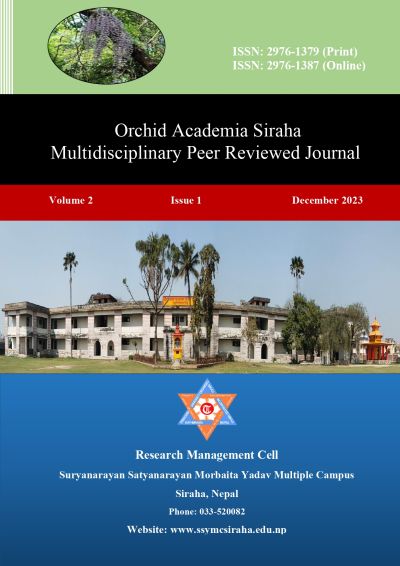Stress Distribution Analysis using ANSYS of the Nose Landing Gear of STOL Aircrafts Considering Runway Gradient: A Simulation Study
DOI:
https://doi.org/10.3126/oas.v2i1.65618Keywords:
STOL, Twin-Otter, runway gradient, numerical simulationsAbstract
Landing gear failures are a major cause of aircraft failures because they are an integral part of the aircraft's development. According to the Federal Aviation Administration (FAA), 50% of all aircraft failures occur during take-offs and landing. The landing gear of a short take-offs and landing (STOL) aircraft has had its static and dynamic forces analyzed analytically and numerically. SOLIWORKS is used to model the landing gear, and ANSYS is used to perform the numerical simulation results. Following it, the model is examined for stress and deformation with the boundary conditions and computed loads into account. This study uses structural finite element analysis (FEA) to analyze the nose gear's stress behavior and displacement during landing, as well as to assess the effect of the runway gradient. Utilizing a comprehensive numerical simulation, the landing gear of a real material Twin-Otter STOL aircraft has been demonstrated to be subjected to a dynamic force of 3653.26N, a pneumatic pressure of 1.59MPa, a bead pressure of 7.97MPa, and a vertical force of 1672.31lbs on level runways, or runways with no gradient. These findings will increase the level of confidence of aircraft manufacturers to make necessary appropriate design of STOL aircraft’s landing gear. It may can decrease the aircraft accidents and increase human life safety ultimately saving valuable time and resources too.
Downloads
Downloads
Published
How to Cite
Issue
Section
License
Copyright (c) 2023 RMC, SSMYMC, Siraha

This work is licensed under a Creative Commons Attribution 4.0 International License.
This license allows reusers to distribute, remix, adapt, and build upon the material in any medium or format, so long as attribution is given to the creator. The license allows for commercial use.




